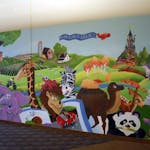University of Minnesota sociologist Arthur Harkins challenged his students and colleagues to consider what the world might look like in the future, and how technology might transform the way people live and work.
He called himself a futurist, and students flocked to his popular undergraduate course, Societies of the Future.
Harkins also pushed to make sure educators and schools trained students for the future, with an eye toward emerging technologies and skill sets needed to thrive in the 21st century.
Harkins, of St. Michael, died on May 17 at a St. Louis Park rehabilitation center of health complications after suffering a stroke in January. He was 80.
"His real interest was on future studies," said U Professor Frances Vavrus. "He was a very upbeat, positive, collegial person to work with. He truly thought outside the box. He was someone who saw the world and thought: What would the society of the future look like ideally?"
Harkins was born in Olean, N.Y., the oldest of six children. His family moved to Kansas, where he spent most of his childhood.
"He was quite unconventional early on. He was building rockets in the backyard and experimenting," said his wife, Nataliya Harkins.
Harkins enlisted in the Army at age 18; after two years of service, he joined the Air Force and served as a pilot for six years. His time in the service sparked his interest in education, culminating with his doctorate in sociology and anthropology from the University of Kansas in 1968.
As a student, Harkins was hired to work with the NASA manned space mission program, his wife said. That happened after he attended a lecture on manned space travel, when he stood up and commented that the space shuttles were not being designed with human comfort in mind.
He joined the U faculty in the late 1960s, retiring in June 2014. He had most recently served as associate professor in the Department of Organizational Leadership, Policy and Development in the College of Education and Human Development.
Harkins liked to challenge the status quo of academia.
"Art reached out to me as a fellow oddball and a sociologist," said U Professor Karen Seashore, in a written statement. "We bonded almost immediately over issues of how to stretch what seemed then like a very hidebound discipline [sociology] into a more dynamic and forward-leaning and learning approach to considering social phenomena."
Harkins co-founded the Leapfrog Initiatives at the U, partnering with future educators and school districts to promote innovative teaching and the use of cutting-edge technologies in classrooms.
In an interview on the Leapfrog Initiatives website, Harkins described the Leapfrog philosophy as "chang[ing] the way you live in the present so you can create a desirable future very efficiently, very rapidly and at very low expense."
Harkins wanted students to have access to the tools of the future, Vavrus said. "He was a big advocate of learning technologies, which were ideally more than a chalkboard or an overhead projector. He wanted students to use iPads," she said.
Nataliya Harkins said her husband liked to ponder a future in which scientists would discover a way to download contents of a human brain to a computer, or the possibility that one day a person could have a virtual existence.
"He would always encourage people to get out of their comfort zone, put aside fears, be bold and break new ground," she said.
Besides his wife, Harkins is survived by his sons Benton and Christopher.




